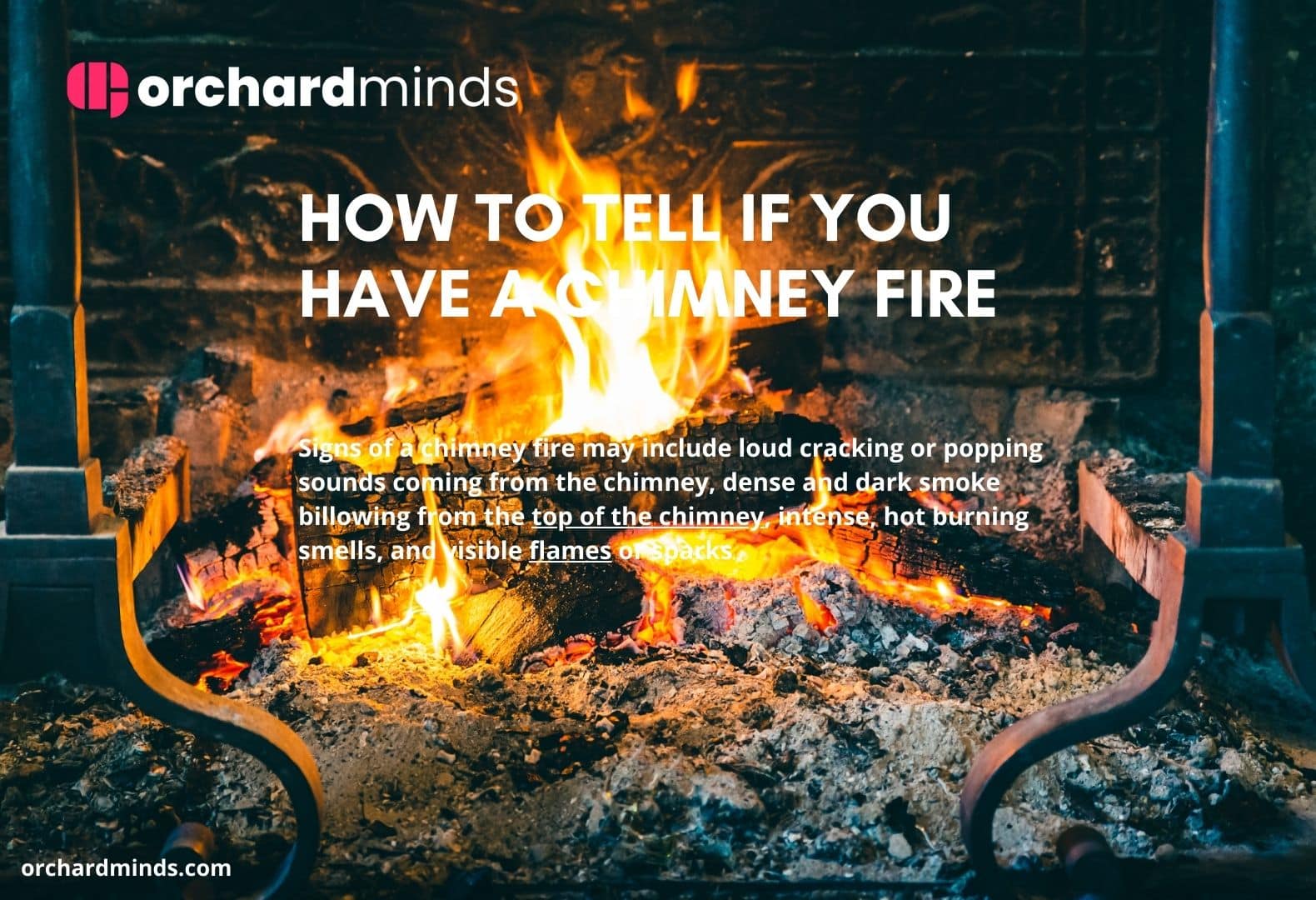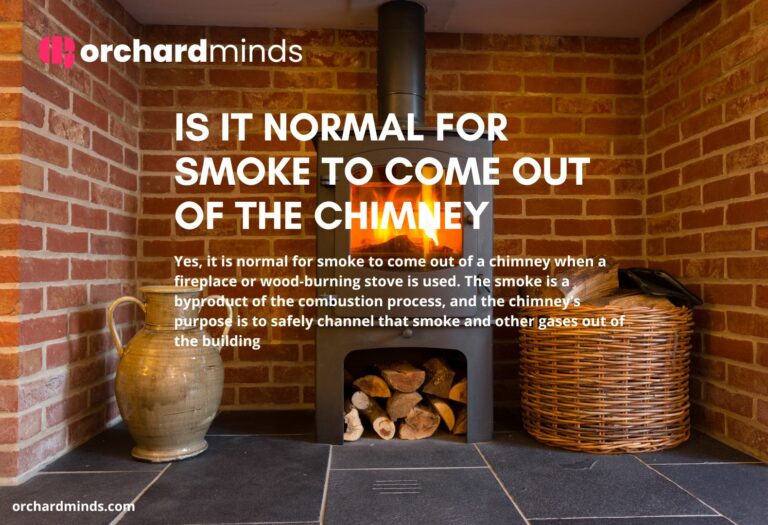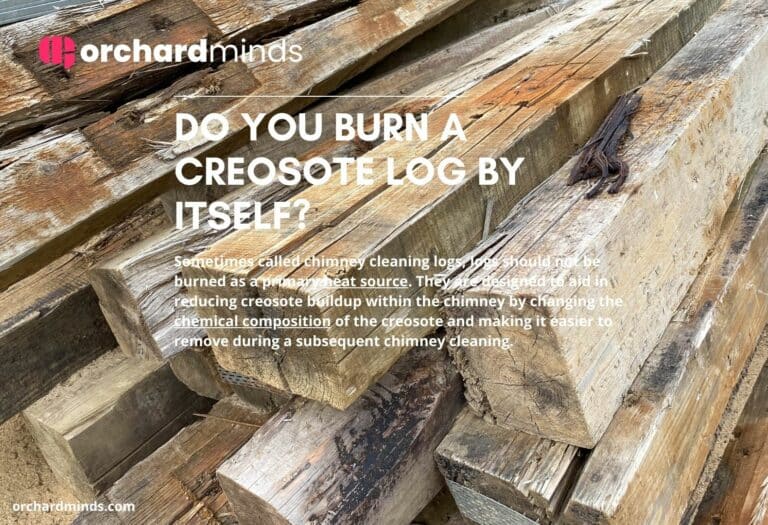How to tell if you have a chimney fire? Signs of a chimney fire may include loud cracking or popping sounds coming from the chimney, dense and dark smoke billowing from the top of the chimney, intense, hot burning smells, and visible flames or sparks. Inside the home, you might hear a rumbling noise or see dislodged bricks or tiles from the chimney structure. If you suspect a chimney fire, call the fire department immediately, evacuate the premises, and close any dampers or air intakes to limit the oxygen supply to the fire. Chimney fires can be hazardous, so it’s essential to prioritize safety and let professionals handle the situation.
Signs of a fast-burning chimney fire
Fast-burning chimney fires exhibit intense and aggressive signs, such as a roaring sound like a freight train, extreme temperatures that can cause the metal chimney pipe to warp or glow red, and visible flames or dense, turbulent smoke forcefully shooting out of the chimney’s top. In such cases, immediate action is crucial – evacuate the premises, call the fire department, and ensure no one attempts to extinguish the fire themselves, as chimney fires can be exceptionally hazardous.
Signs of a slow-burning chimney fire
Slow-burning chimney fires often have less dramatic signs, making them particularly dangerous as they can go unnoticed for extended periods. Indicators include:
- A low, rumbling sound.
- Minimal visible flames or sparks.
- Thick, dark, and tar-like creosote deposits build up inside the chimney.
These fires can smoulder for an extended time, potentially causing structural damage to the chimney and posing a significant fire hazard. Regular chimney inspections and cleaning are essential to prevent slow-burning chimney fires.
What to do if you notice signs of a chimney fire
If you notice signs of a chimney fire, it’s crucial to act quickly and prioritize safety:
- Evacuate: Immediately evacuate all occupants from the home, ensuring everyone’s safety.
- Call 911: Dial the emergency services number to report the chimney fire and request the fire department’s assistance.
- Close Dampers and Air Supply: If safe, close any dampers, vents, or air intakes to limit the oxygen supply to the fire and slow down the combustion.
- Do Not Use Water: Avoid using water to try and extinguish the fire, as it can create steam and potentially worsen the situation or damage the chimney structure.
- Stay Clear: Keep a safe distance from the home and the chimney, as chimney fires can cause structural damage and potentially lead to dangerous situations.
- Prevent Future Fires: After the incident, have the chimney professionally inspected and cleaned to remove creosote buildup and prevent future chimney fires.
Chimney fires can be hazardous, so it’s essential to prioritize safety and let professionals handle the situation. Regular chimney maintenance and cleaning can help prevent chimney fires in the first place.
What causes chimney fires?
Chimney fires are typically caused by the ignition of creosote, a highly flammable substance that accumulates in the chimney as a byproduct of burning wood or other fuels. Creosote forms when the smoke, gases, and particles from combustion cool and condense on the interior chimney walls. If the creosote buildup becomes substantial and ignites due to high temperatures or sparks, it can lead to a chimney fire. Inadequate ventilation, burning unseasoned wood, or irregular chimney maintenance can increase the risk of chimney fires. Regular chimney inspections and cleaning are crucial to mitigate this danger.
Chimney Fire Safety Tips
Chimney fires can pose a significant safety risk, but you can reduce this risk by following these safety tips:
- Regular Inspections: Have your chimney professionally inspected and cleaned annually to remove creosote buildup and identify any structural issues.
- Burn Seasoned Wood: Use well-seasoned, dry wood with low moisture content to reduce creosote formation and improve combustion efficiency.
- Proper Airflow: Ensure good ventilation by keeping the damper open and providing adequate air for combustion. Follow the manufacturer’s guidelines for your heating appliance.
- Install a Chimney Cap: A chimney cap can prevent debris, animals, and rain from entering the chimney, reducing the risk of blockages and fires.
- Use a Spark Arrestor: Install a spark arrestor on top of the chimney to prevent sparks and embers from escaping.
- Monitor Smoke: Keep an eye on your chimney’s colour and amount of smoke. Unusual amounts of dark or thick smoke can indicate a problem.
- Dispose of Ashes Safely: Store ashes in a metal container with a tight-fitting lid and place it on a non-combustible surface away from the house.
- Keep Flammable Items Away: Ensure flammable materials are kept safely from the fireplace or stove.
- Install Carbon Monoxide Detectors: Use carbon monoxide detectors in your home to alert you to any potential issues with combustion gases.
- Know What to Do: Familiarize yourself and your family with the signs of a chimney fire and the proper evacuation steps, and call the fire department.
Following these safety tips and adequately maintaining your chimney and heating system, you can significantly reduce the risk of chimney fires and ensure a safer and more efficient heating experience.
Chimney advice
Indeed, here are some essential pieces of advice for chimney maintenance and safety:
- Regular Inspections: Schedule an annual chimney inspection by a qualified professional to check for creosote buildup, structural issues, and potential hazards.
- Clean Regularly: Have your chimney cleaned as needed, typically once a year or more often if creosote buildup is significant. Regular cleaning helps prevent chimney fires.
- Burn Seasoned Wood: Use well-seasoned, dry wood with a moisture content of 20% or less to minimize creosote formation and ensure more efficient combustion.
- Proper Ventilation: Keep the damper open while using the fireplace or stove to ensure adequate airflow for combustion and ventilation.
- Install a Chimney Cap: A chimney cap helps keep debris, animals, and rain out of the chimney, preventing blockages and potential fire hazards.
- Spark Arrestor: Consider installing a spark arrestor at the top of the chimney to prevent sparks and embers from escaping.
- Safe Ash Disposal: Dispose of ashes in a metal container with a tightly fitting lid, placed on a non-combustible surface away from the house. Empty ashes only when you are sure they are excellent.
- Clear Area Around Fireplace: Keep flammable materials, including furniture, curtains, and decorations, safe from the fireplace or stove.
- Use Carbon Monoxide Detectors: Install carbon monoxide detectors in your home to monitor for any potential issues with combustion gases.
- Chimney Fire Safety: Be aware of the signs of a chimney fire (roaring sound, intense smoke, visible flames), and know how to respond by evacuating and calling the fire department.
- Educate Your Family: Ensure your family members know the safety procedures and understand how to use the fireplace or stove responsibly.
- Follow Manufacturer’s Guidelines: Adhere to the manufacturer’s recommendations for your specific heating appliance and chimney system.
- Weatherproofing: Check for any cracks or gaps in the chimney structure and repair or seal them to prevent water infiltration and damage.
Following these chimney advice and best practices, you can maintain a safe, efficient, and enjoyable fireplace or stove while reducing the risk of chimney-related issues.




Leave a Comment